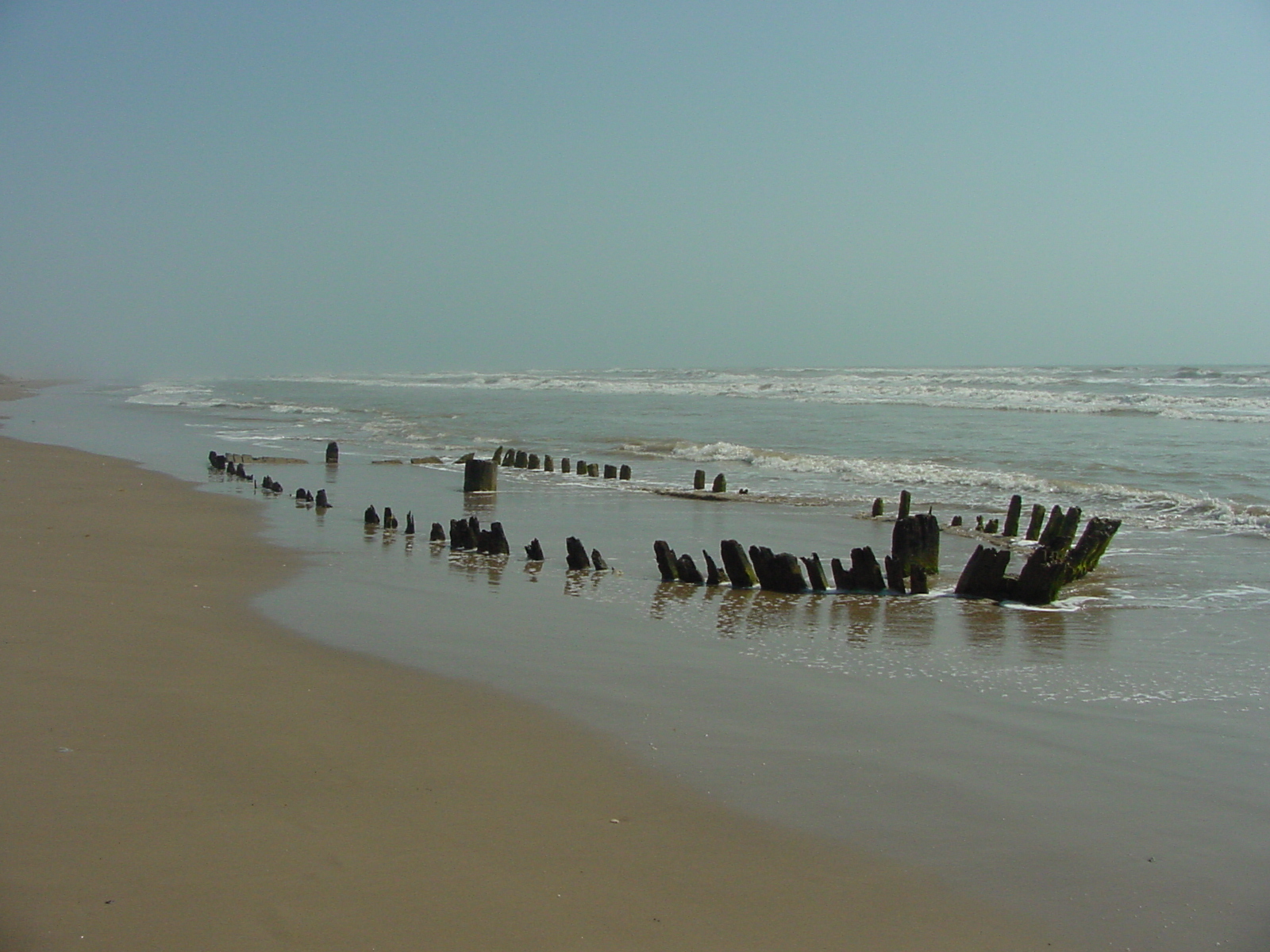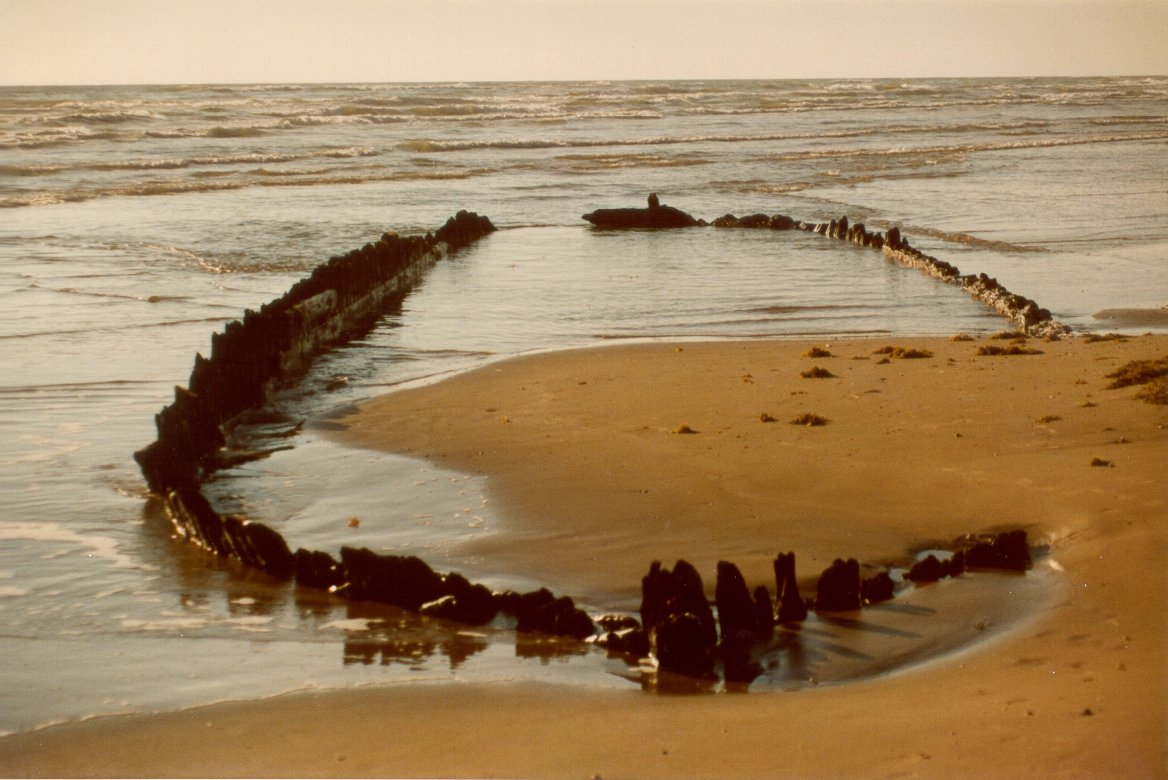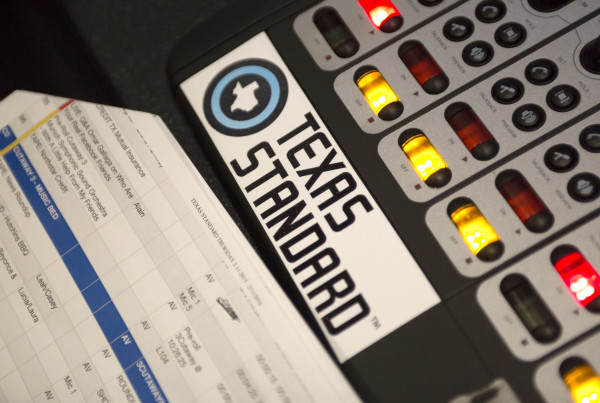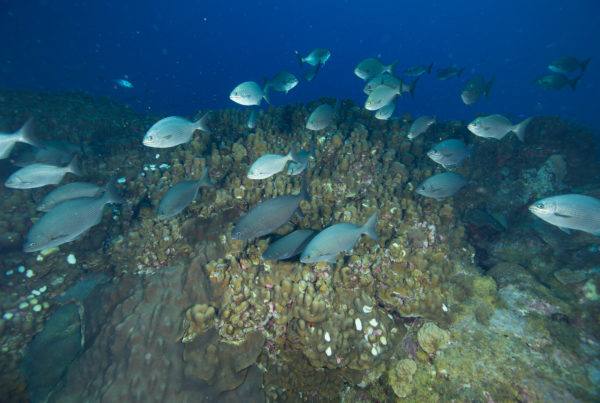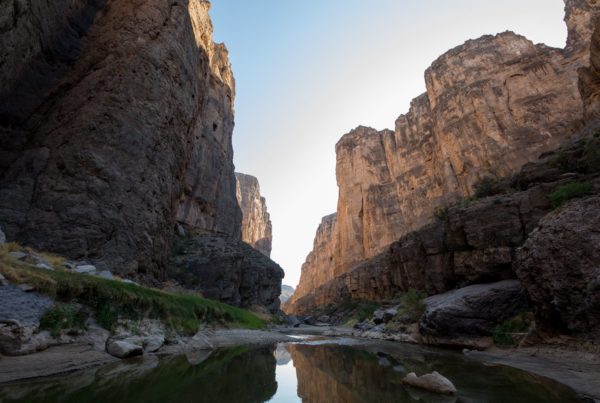What remains of the ship La Belle sits in a place of honor in the Bullock Texas State History Museum in Austin. It sits in a dark exhibit hall, constantly monitored, and protected by clear plastic barriers. According to Franck Cordes, one of the museum’s curators, there’s a good reason the ship is given such respect.
“It’s a pebble that sends out huge ripples on the water in terms of our history here as Texans,” Cordes says.
La Belle was a French ship whose passengers intended to colonize Texas. Their plan failed, but it spurred the Spanish to set up missions that irrevocably changed the area’s fate.
“This really pushes the Spanish to make a concerted effort to colonize what we now call Texas,” Cordes says.
La Belle sunk in Matagorda Bay in 1686. The 54-foot-long vessel was buried under mud and sand for over 300 years, along with millions of artifacts from the would-be colonists. Getting the remains of the ship out of the bay and into the Bullock museum took an extraordinary effort.
It was located in 1995, buried in the sand under about 12 feet of water. archaeologists had to build a structure called a cofferdam to get it out. Cordes describes it as a “donut island” – two rows of steel plates around the perimeter of the ship. Once it was constructed, the water on top of La Belle could be pumped out, and the excavation could happen like it would on dry land. The dig took about 10 months. Then, Texas A&M University researchers disassembled La Belle and dehydrated each piece with the largest freeze dryer in North America to preserve them. Archaeologists also cataloged the unprecedented haul of artifacts from the ship, including muskets, combs, jewelry and cookery. The whole process took over 20 years, tens of millions of dollars – and explains why shipwrecks are so seldom rescued.
Tough to save
As the state marine archaeologist for the Texas Historical Commission, Amy Borgens knows this better than anyone
“Usually when you see ships that are being saved and preserved, you’re usually seeing that sort of process reserved for really, really significant shipwrecks,” Borgens says.
Much of Borgen’s job is identifying and researching shipwrecks. But it’s typically too time-consuming and expensive to preserve them. And that’s if there’s still physical evidence of the wreck. In the Gulf of Mexico, many ships have disappeared into the bellies of tiny wood-boring mollusks called shipworms.
“If you have a ship that sinks in open water and it doesn’t immediately become buried, all that wood that’s exposed above the sediment line will become consumed,” Borgens says.
Shipworms are actually a kind of clam with a long, skinny body. They burrow into submerged timbers and eat the wood as they go. Thousands of ships are known to have wrecked in the Gulf of Mexico. For many of them, this was their fate: slowly disappearing into the bellies of shipworms. That means it’s rare to find evidence of an old shipwreck. But they are out there – including a couple at the very southern tip of Texas on Boca Chica Beach, where the Rio Grande meets the Gulf of Mexico.
“I have kind of a soft spot for those because they’re sort of underdogs in a way,” Borgens says.
She means they aren’t famous like La Belle – they’re unlikely to grab headlines or inspire documentaries. Not much is known about them, even their names – they’re known as Boca Chica Number 1 and Boca Chica Number 2. They were probably both schooners – sailing ships that might have been used for trade or fishing. Number 1 likely dates back to around the Civil War, while Number 2 is probably from around the early 1800s.
The wrecks are buried under Boca Chica Beach, so they’re not usually visible. They only emerge after a big storm that uncovers the sand on top of them. But that’s also why they’ve survived for so long — the sand protects them from shipworms. But that’s starting to change. Boca Chica Beach is losing sand, exposing the wrecks to open and the Gulf and the shipworms that live in it.
“So these really unique, preserved shipwrecks, if that process continues, we’re eventually going to lose them,” Borgens says.
Boca Chica Beach loses about four feet of shoreline per year due to erosion, according to studies from the University of Texas at Austin’s Bureau of Economic Geology. It appears to be particularly harmful to Boca Chica Number 2. It hasn’t been seen for a few years now, and Borgens fears it may have already been consumed.
A fitting discovery
Historically, the Boca Chica Beach has been an entryway into Texas. Ships from Spain, Mexico, England, the United States and the Confederacy all used it at one time or another. Keith Reynolds spends a lot of time looking for what they left behind, combing the beach in his white Nissan Titan.
Reynolds lives nearby in a house on the Rio Grande. He volunteers for the Texas Historical Commission, keeping an eye out for artifacts on the beach. He’s typically the first one to tell Borgens if Boca Chica Number 1 or Number 2 is visible. His property looks like a shipwreck graveyard – stack upon stack of old timbers he’s found and kept for Borgens to study later on.
“There’s no telling how many different shipwrecks are located just right off the beach,” Reynolds says.


